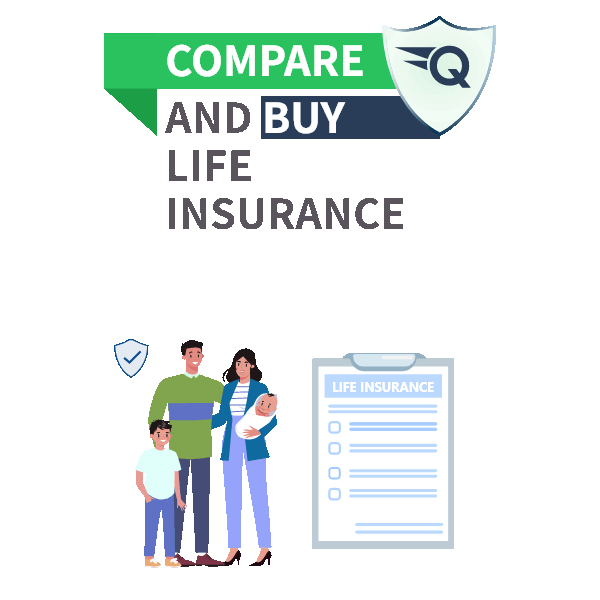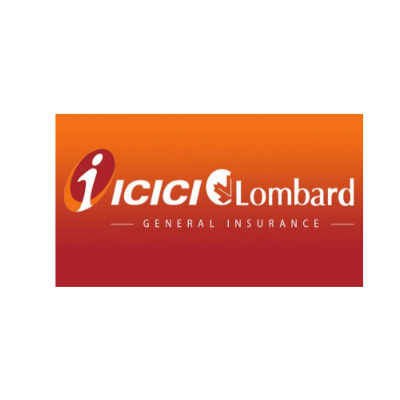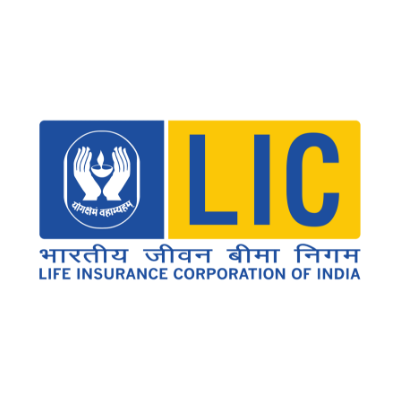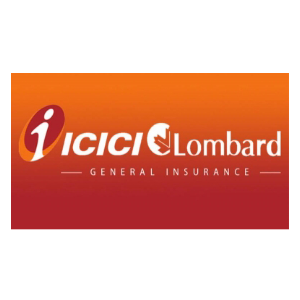MEANING OF LIFE INSURANCE ALONG WITH ITS TYPES AND IMPORTANCE
What is Life Insurance?
The life insurance concept is related to the assurance of financial funds which your family can receive after your death. Or you can benefit from your setbacks. The life insurance meaning in technical language can be stated as a financial product.

Life insurance is a product specifically designed to provide a death benefit to beneficiaries upon the death of the insured person. It grants a cushion of protection to help cover expenses such as funeral bills, debts, mortgage payments, and living expenses for dependents.
In this, a policyholder and an insurance providing company are involved. Insurance companies issue this financial shelter to the policyholder in response to premiums. A policyholder pays premium costs to the company or insurer for lifetime. Reputed health insurance companies have good finance strength, trustworthy, and easy to apply.
All in all, it’s a legal and convenient way to secure yours and your family’s life in unavoidable conditions including.
Key Attributes of Life Insurance
- Life Insurance is purchased to confirm financial stability for loved ones in case of an unexpected loss.
- Regular premiums must get paid by the policyholder to receive a great benefit and maintain the police active.
- Beneficiaries are eligible to get the policy’s compensation following the policyholder’s demise.
- Life insurance policy can give the best benefits only if the insurance company is doing well and satisfying their clients with transparent and straightforward dealings.
- Accidental Death cover can be used for treatment if it is possible to the policyholder.
- It’s a completely customizable medium that can deliver financial security and peace of mind to the policyholders and their families.
Benefits of Life Insurance
Besides family financial security after policyholder’s death, life insurance offers several other benefits including-
- Income replacement: Helps replace lost income, enabling dependents to cover daily expenses, mortgage payments, or education costs.
- Debt Coverage: Confirms outstanding debts, such as home loans, car loans, or credit card balances, are paid off, preventing the financial burden from falling on family members.
- Tax Benefits: In many countries, premium paid and death benefits received are eligible for tax exemptions or deductions.
- Options to save and invest: Some policies, like universal or whole insurance, involve a cash value component that grows over the time, which can be borrowed against or withdrawn.
- Estate Planning: Helps cover estate taxes and make certain wealth transfer to the next generation. Without financial strain.
- Business Continuity: For business owners, life insurance can ensure business stability, fund buy-sell agreements, or compensate for the loss of a key employee.
Life insurance is a versatile tool for safeguarding financial health and meeting both personal and family goals while living your life and after your life.
What are Types of Life Insurance?
Life insurance can be categorized into various types to meet different financial needs and goals. The main types include-
a) Term Life Insurance
Its coverage period: Fixed term (say 20, 0r 30 years)
Purpose: Make provision for a survivor benefit if the insured dies during the term.
Features: Affordable premium, no cash value or savings component. It is ideal for temporary needs, like covering a mortgage or providing for dependents until they are financially independent.
b) Whole Life insurance
Its coverage period: Lifetime/Permanent
Purpose: Merges longer term saving elements with the death benefit.
Features: Fixed premium. Cash value climbs over time and can be retrieved against or withdrawn. This life insurance is suitable for long term financial planning.
c) Universal Life Insurance
Coverage Period: Lifetime
Purpose: Anticipates flexibility in premiums, coverage, and savings.
Features: Interest on cash value is figured out using either a guaranteed premium or market rates. Policyholders are capable of altering premiums and death benefits within limits that apply.
d) Endowment Plan:
Coverage Period: Fixed term or until a specific age
Purpose: Provides both a death benefit and a maturity benefit if the policyholder survives the term.
Features: Popular for wealth accumulation or saving for goals like education or retirement.
Apart from this, Child life insurance, Joint Life Insurance, No-exam Life Insurance, Group Life Insurance types exist with different rules and conditions. Your financial goals, budget, and the needs of your beneficiaries can influence the decision of identifying an appropriate sort of life insurance.
How Life Insurance Works?
In life insurance, the policyholder and the insurance company enter into an agreement that grants financial immunity to the policyholder’s beneficiaries. Here is how it operates-
1) Purchase of Policy: The policyholder chooses a life insurance plan based on their needs (term or lifelong). Regular payments are determined based on factors like age, coverage, amount, health, and the type of policy.
2) Premium Payments: The policyholder pays premiums monthly, annually, or as a lumpsum. These payments keep the policy active. A lapse of coverage may result from omitting payments.
3) Death Benefit: If the insured person passes away while the policy is active, the insurance company pays the agreed-upon death benefit to the beneficiaries. Beneficiaries can use the money for any purpose, such as covering living expenses, debts, or funeral costs.
4) Cash Value (if applicable): Permanent policies accumulate a cash value that can be withdrawn or borrowed against during the insured’s lifetime. Also, it can be used to pay premiums or left to grow tax-deferred.
5) Optional Riders: Riders can improve the policy by providing additional benefits, such as coverage for critical illness, disability, or accidental death.
6) Policy Maturity (if applicable): Some policies offer a maturity benefit if the insured outlives the term, returning a portion or all of the premiums paid.
In essence, life insurance makes sure that a financial safety net is in place for the policyholder’s loved ones, offering security.
What Affects Premiums of Life Insurance?
Several factors are there that influence the premium of life insurance, which the insurer evaluates during the underwriting process. These factors include-
- Age: Teenagers typically prefer to pay bottommost premiums because they are considered less insecure.
- Health: Overall health, including pre-existing conditions, medical history, and lifestyle habits (e.g smoking), directly impacts premiums. Healthier individuals usually pay fees.
- Gender: Statistically, women frequently pay premiums for the same coverage as men because they generally live longer lives.
- Coverage Amount: Higher death benefits result in higher premiums since the insurer assumes more risk.
- Policy Term: Longer terms (for example 30 years vs. 10years) typically have higher premiums because the insurer is exposed to risk for a longer period.
- Lifestyle choices: Risky habits like smoking, excessive drinking, or engaging in dangerous hobbies (for example, skydiving) lead to higher premiums.
- Occupation: Jobs with higher risk (for example, firefighters, construction workers) may attract higher premiums.
- Family Medical history: A history of hereditary diseases (for example cancer or heart disease) may increase premiums.
- Riders: Adding optional benefits (for example, critical illness rider, accidental death benefits increase the premium)
- Payment Frequency: Paying premiums monthly might cost more overall than paying annually due to administrative fees.
- Location: Factors like regulations, healthcare costs, and life expectancy trends in a region can influence premiums.
By understanding these factors, policyholders can make informed decisions to find coverage that fits their needs and budget.
How to Buy Life Insurance
Buying a life insurance policy involves different steps to make certain you select the right coverage for your needs. Here is a detail guide-
1) Assess Your Needs:
Consider your financial responsibilities, like debts, income replacements, children’s education, and living expenses for dependents to determine coverage amount. Decide between term or permanent insurance type.
2) Research Reliable Insurance Providers:
Look for reputed insurance companies with good financial ratings along with satisfactory customer service. Compare policies, premiums, and features offered by different insurers.
3) Get a Quote:
Make use of online tools or contact insurance agents to get premium estimates based on your desired coverage and term. Furthermore, assure the quote covers any optional riders you may want, like critical illness or accidental death benefits.
4) Calculate and Examine Your Budget:
Ensure the premium is affordable for the long term. The inability to pay premium may result in a coverage lapse.
5) Consult any Financial Advisor:
Discuss with a licensed insurance agent or financial advisor to clarify any doubts and get personalized advice. They are capable of clarifying the terms and conditions regarding the selection of finest policy.
5) Execute the Application:
Get through the application form thoroughly. Be truthful about your health, lifestyle, and medical history. False information may result in the dismissal of a claim.
6) Undergo Medical Examinations:
Some policies require a medical exam to assess your health and determine the final premium. In some cases, no-exam policies are available, but they may cost more or offer lower coverage.
7) Review the Policy:
Review the policy documents once approved to make sure all details including coverage amount, term, and riders, are correct.
8) Pay the Premium:
Make the initial premium payment to activate the policy. Settle on a payment frequency (monthly, quarterly, or annually) that suits you.
9) Install and Upgrade the Policy:
Notify your beneficiaries about the policy. Regularly review and update your coverage as life circumstances change (for example, marriage, children, or rise in income)
By following these steps, you can ensure you can complete the purchase for a policy that aligns with your financial goals and provides peace of mind.
Conclusion
Buying life insurance is crucial for financial planning. It is a safety net that validates that your financial responsibilities are taken care of, even when you are no longer there to provide.
Life Insurance - FAQs
Can I Buy Multiple Life Insurance Policies?
Yes, you can have an array of life insurance policies at the same time.
Is it possible to change the nominee on a life insurance policy after purchase?
Yes, before the policy matures, the policyholder can shift the nominee at any moment.
Does life insurance have tax benefits?
Yes, life insurance often provides tax benefits depending on the country and its specific tax laws.
Can I surrender my life insurance policy before maturity?
Yes, before your life insurance policy matures, you can give it up. But, this decision has implications depending on the type of policy and the terms.
Can I increase the coverage of my life insurance policy?
Yes, you can increase the coverage of your life insurance policy in many cases. But it relies on the terms of your policy and the insurer’s rule.
Does life insurance cover death by suicide?
It all depends on the policy terms. Suicide usually gets defended after a 12-month terms form the date of policy registration.
































